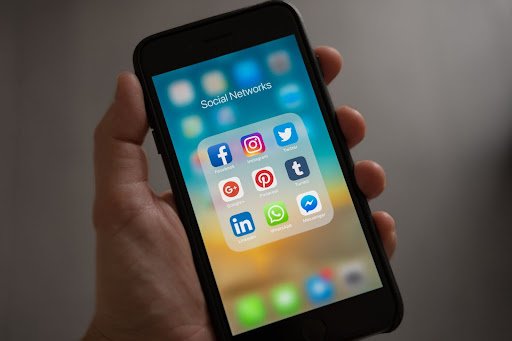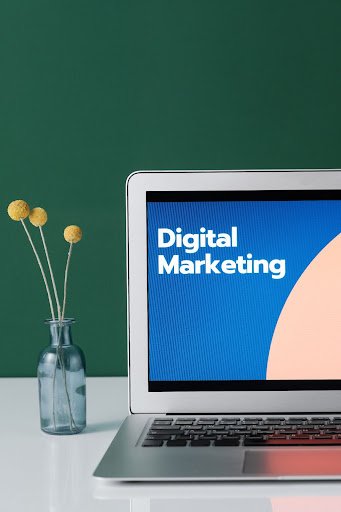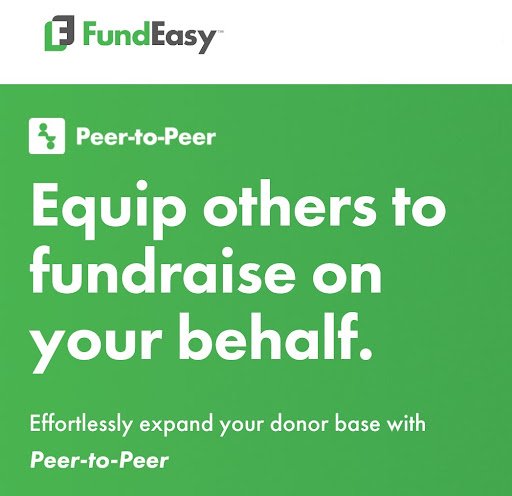Launch a Successful Peer-to-Peer Fundraising Campaign in Just 5 Steps
Fundraising to support your organization’s programs and projects can take up a good portion of your team’s time.
Courting major donors who can provide large, long-term donations is not a fast process, and you will probably spend months building a relationship before you see a payoff. While these major donor contributions are essential, you can also make the most of smaller, one-time donations by mobilizing your donor base to fundraise from their connections for you.
This is called Peer-to-Peer fundraising, and here’s how to do it successfully.
What is a Peer-to-Peer fundraiser?
When your organization runs a peer-to-peer fundraising event, you get existing champions of your cause to invite their friends and family to support them as they fundraise for you.
Formerly, people would do this by going door to door and asking for donations, but let’s face it - that’s awkward. And leaves a lot of room for mishandled funds and human error!
Today, peer-to-peer campaigns are run mostly online through fundraising platforms like FundEasy’s Peer-to-Peer.
One of the most common ways you may have seen this done is through charity walks or 5k’s.
When a walker or runner registers for peer-to-peer events, they will be given a link to their own fundraising page.
If they registered as part of a team, they may have a link to both their personal fundraising page and their team’s fundraising page. In Peer-to-Peer by FundEasy, we make this even simpler by providing one page for each participant that also shows their team and team total. It’s the individual fundraising after all, not the team.
You may have then seen your friends post these pages to social media asking for their friends and family to contribute through the page - that’s Peer-to-Peer fundraising!
All donations go directly to the organization hosting the event, while most of the promotion and outreach is done by their network of supporters. Walks and 5Ks aren’t the only way to run a peer-to-peer fundraiser, though they are one of the more popular ways.
An Anything-a-Thon would be another example of a peer-to-peer fundraiser. What’s great about peer-to-peer campaigns, especially in the post-COVID world, is they can accommodate both hybrid and virtual events in addition to in-person fundraisers.
Peer-to-peer campaigns leverage the power of technology and social media to raise large amounts of funds with very little effort or overhead from your organization.
Most people are willing to donate to a peer-to-peer campaign because all that is required is a one-time commitment that is as low as a few dollars.
To learn more about how Peer-to-Peer fundraisers work, view our webinar about The Skinny on Peer-to Peer Fundraising.
Do you need to be good with technology to have a successful Peer-to Peer campaign?
While peer-to-peer fundraising’s technology-forward approach is what makes it so easy, it may give you pause if your donor base is older and less likely to consider themselves tech-savvy.
Depending on your team, you may even have concerns about your ability to manage the backend technical aspects of this kind of campaign as well.
Luckily, you don’t have to be a technology expert to successfully run a peer-to-peer campaign! Platforms like Peer-to-Peer include intuitive interfaces and a lot of support resources to help guide you and your donors through every step of the process.
How Peer-to-Peer campaigns help attract younger donors
To ensure the longevity of your organization, you need to make sure you’ll have donors to sustain you over the decades to come. This starts with encouraging a younger generation of potential donors to get involved now.
Millennials prefer to interact with nonprofit organizations and charities differently than their parents did.
While they’re not exactly digital natives like Gen Z, they are very comfortable using technology and prefer it for its speed, efficiency, and convenience when compared to analog methods of doing things. Younger generations also prefer experiences over products and are more likely to engage in hands-on activities for nonprofits.
Compared to baby boomers, millennials are more likely to spread the word about a nonprofit organization they support, especially over social media.
For donors at the beginning of their careers who may not have large amounts of capital to spare for a large donation at the end of the year, peer-to-peer campaigns let them make a big impact via a series of incremental donations that build up.
5 Steps to Launching a Successful Campaign
A successful peer-to-peer campaign can help you build relationships with potential new donors while funding your organization’s operations. While a peer-to-peer campaign is driven by your donor base reaching out to their friends and family to bring in new donors, your team has the critical role of marketing the fundraiser effectively.
You can help expand your peer-to-peer campaign’s reach with a creative idea, a solid marketing strategy, engaged ambassadors, a competitive edge, and the support of a dedicated Peer-to-Peer fundraising platform.
1. Come up with a creative idea that relates back to your organization’s mission.
In previous blog posts, we’ve covered how storytelling can boost engagement and connection with your fundraising campaigns.
Peer-to-peer campaigns provide a great opportunity for storytelling because they are so versatile.
Not only does this help pique the interest of more participants, but you can also tie your fundraiser back to your organization’s mission.
Even something as simple as a 5K or walk can be customized to create a more unique event related to your cause.
If your organization is devoted to women’s health, empowerment, or professional development, you could host a “walk a mile in her shoes” event where all participants have to complete the walk while wearing heels.
An animal shelter could challenge pet owners to walk a certain distance with their pet in a month and ask their family and friends to sponsor them as they work toward their goal.
Successful peer-to-peer campaigns are built on community engagement.
A fun concept and catchy slogan can help generate a lot of interest for your event. Since peer-to-peer fundraisers don’t require large financial commitments, you can raise a lot of money by accumulating donations of only a few dollars at a time and spread awareness for your mission by appealing to people’s sense of humor!
2. Develop a marketing plan
The key to increasing participation and revenue in a peer-to-peer campaign is communication.
Unlike with a fundraising gala or banquet, you’re more interested in casting a wide net to bring in a lot of smaller donations than connecting with a handful of major donors. The more people who see your fundraiser, and understand what your mission is, the more successful you will be!
Marketing is your organization’s primary method of communicating with potential donors. While all your marketing efforts should start with detailed planning, it is especially important to sit down and map out your marketing strategy for your peer-to-peer campaign before your launch.
Start with a timeline. How far out from the event are you going to start marketing? Which channels does your target audience respond the best to?
If you’re doing paid ads, give yourself time to research high-performing keywords and conduct A/B testing of different ads.
Decide what printed materials you will need, and when you will need them.
Do you have someone in-house to design your graphics and printed materials, or will you need to utilize the services of a graphic designer from outside your company?
Figure out your deadlines for hiring a designer, finalizing designs, and getting them printed. For social media and email content, write a complete content calendar so you know what will be posted or sent when. Alyssa Dwire and Jenna Tableon of Life Network have given great advice on our blog for marketing a charity walk. You can access their full presentation here.
3. Work with ambassadors to launch your fundraising campaign
Another effective approach to engage ambassadors for your organization to help spread the word about your peer-to-peer campaign. These ambassadors should already have shown commitment to your organization and been actively involved in your mission and/or past fundraising events.
If you have consistent, highly involved volunteers for your organization, start by asking them to be your ambassadors. Peer-to-peer campaigns work when donors and participants leverage their existing relationships to get donations from individuals who are not already involved with your organization.
Open the fundraising period with a special launch event for your ambassadors and make sure to send them off with goodie bags of swag.
Set up photo opportunities at your launch event that your ambassadors can share to their social media, and make sure the items in the gift bag are things they can carry around with them in daily life so they can strike up conversations about your organization and event!
Be sure that you’re also equipping your Ambassadors with tangible ideas for promoting the event, and fostering conversations in your launch event so they can share ideas and build connections with others.
The more of an easy action plan your Ambassadors can leave the meeting with, the more successful they’ll be in helping you to promote the fundraiser.
4. Make it a competition
Let’s face it, people like to win.
That’s why turning your peer-to-peer fundraiser into a competition can motivate your participants to keep sharing their donation page more frequently and bring in more money!
You can have a prize for the team who raises the most donations and the individual that raises the most donations.
The award or prize for winning doesn’t need to be huge or expensive. You could do something as simple as printing out a certificate, posting about their victory on your social media channels and website, and including their name and the total amount of funds they raised in future marketing materials.
You can also see if local businesses are willing to donate items for the prize, like a pair of movie tickets or a gift card to a local restaurant. At your next event, you could name the water station or medical tent in their honor.
If you have local media coming to cover the event, make sure they get a picture of the winners and mention them in their coverage.
5. Use a dedicated Peer-to-Peer fundraising platform for nonprofits to manage the event
Since most peer-to-peer campaigns live online now, you’re going to need a landing page for the fundraiser and a way for participants to build their own individual donation pages.
There are many dedicated peer-to-peer fundraising software programs and platforms that will allow you to set up your own custom fundraising webpage and let your participants set up and customize donation pages for themselves and their teams.
A platform designed specifically for facilitating peer-to-peer campaigns will offer existing templates that you can customize with your own branding but that already contain the functions you need including registration forms, emailing capabilities, donation meters, and leaderboards.
By using an existing platform, you can ensure your donors that they are sending their money through a secure platform.
As a backend user, you’ll be able to easily track your peer-to-peer campaign’s progress toward your goal and automate communications with all your participants and donors. This frees up your staff to manage the daily operations of your organization and any on-site needs for the event.
FundEasy’s Peer-to-Peer Platform
FundEasy’s Peer-to-Peer makes peer-to-peer fundraising easy for both your organization and your donors.
You get full control over your fundraising page’s look and messaging with the ability to fully customize and add branded content to your web page and emails.
Peer-to-Peer supports integrations with WayCool, Facebook Pixel, Google Analytics, MailChimp, eKYROS, Raiser’s Edge, and over 5,000 other platforms through Zapier.
All donations received online are immediately deposited into your bank account, and the platform also allows you to track any cash donations, so your full total raised is always accurate.
With the animated fund meter, your donors can see that full total and visualize how close you are to meeting your goal. All information captured in Peer-to-Peer can be directly imported into your donor management system.
Your participants can easily customize their unique fundraising page with photos, videos, and blog posts and send out custom email updates to their donors or team.
Peer-to-Peer includes a leaderboard function to help encourage friendly competition between participants and drive more donations. The platform is easy to navigate for both front-end and back-end users, so even those who consider themselves technologically challenged can be successful fundraisers.
Want to learn more about Peer-to-Peer by FundEasy? Schedule a Call with our sales department to talk to a real person today.
If you'd like to learn more about our Peer-to-peer, Attendance, or Crowdfunding products, please reach out! We'd love to chat.
Also, if you haven't joined already, we have an exclusive Facebook Group just for our customers! If you are a current FundEasy Customer and would like to join, go here to learn more and request to be added!
Crystal Hoag
This article was inspired by our customers and written to encourage your fundraising efforts. Although we work with nonprofits and events daily, our team members are not Event Consultants. We encourage you to consult with your event consultant, executive team, and/or affiliate organization before making any major changes to your events.











